2 Saving Water
Sheridan Hill
Today’s world faces numerous sustainability challenges and therefore sustainability is becoming a prevalent topic across all aspects of the Australian Curriculum. Education can be seen as a vehicle in helping to “’reorient’ society to a more sustainable future” (Dyment et al., 2014, p. 1105). Students in Year 2 investigate the earth’s resources, in particular the use of water, and identify how humans can care for water supplies (Australian Curriculum, Assessment and Reporting Authority [ACARA], 2022). To further promote the need for a sustainable future, standards from the English curriculum can be used to create an expository text (ACARA, 2022). Expository writing enables a child to research and present facts or ideas about non-fiction subjects, such as water conservation (Fellowes & Oakley, 2019).
CONNECTIONS TO THE AUSTRALIAN CURRICULUM
The Australian English Curriculum for Year 2 highlights the importance of using multimodal texts to engage students for enjoyment, as well as, to “inform and persuade” (ACARA, 2022).
Language (variation and change):
- ACELA1460 – Understand that spoken, visual and written forms of language are different modes of communication with different features and their use varies according to the audience, purpose, context and cultural background
Literature (response to literature):
- ACELT1590 – Identify aspects of different types of literary texts that entertain, and give reasons for personal preferences
Literacy (creating text)
- ACELY1671 – Create short imaginative, informative and persuasive texts using growing knowledge of text structures and language features for familiar and some less familiar audiences, selecting print and multimodal elements appropriate to the audience and purpose
- ACELY1674 – Construct texts featuring print, visual and audio elements using software, including word processing programs
Throughout this expository text, several General Capabilities were also used including Intercultural understanding: Recognising culture and developing respect; Information and Communication Technology and; Critical and Creative Thinking. Due to the nature of this type of text there were cross-curriculum references as well including Science, Art, Technologies and Humanities and Social Sciences.
Planning and Explaining the Task
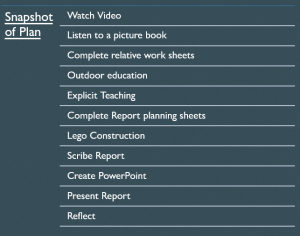
Fletcher’s consent was given by me (parent) and he willingly participated in this activity. Knowing my son, I implemented strategies that would enhance his learning, for example, the use of outdoor education and Lego.
The captivating imagery and narration of David Attenborough’s (2020) Our Planet: How to Save Fresh Water Flow was used to motivate and peak Fletcher’s interest about water. This type of activity can be used for the emergent phase of multimodal text development (Fellowes & Oakley, 2019).
After watching the 7 minute clip, Fletcher was informed about the task he needed to complete. Providing the student with an overview of the task enables them to grasp the idea for what is expected and helps them formulate independence in their learning journey.
This expository text was to be written in a report format. A report encourages students to collect facts and convey information about the topic of water (Fellowes & Oakley, 2019). Fletcher was required to write a list of facts about water, how we use it and how we can save it (Fellowes & Oakley, 2019). Fletcher was given a fact file work sheet from Twinkl (2022) to aid with his report examples.
Teaching Strategies
Four Resources Model
Several teaching strategies were used in this learning experience to enhance and deepen the student’s literacy learning. First, Freebody and Luke’s (1992, as cited in Fellowes & Oakley, 2019) sociocultural approach was incorporated using a Powerpoint presentation on Report writing. To help with Code Breaking, we used pictures and discussed text conventions. To develop his skills as a Text participant, we discussed how he uses water. To help him as a Text User, we talked about how to educate others about water usage and how to write these points in a report format. The PowerPoint, picture book and video clip were used to teach critical literacy to help Fletcher become a Text Analyst (Fellowes & Oakley, 2019). Using these three means, Fletcher learnt about how the authors positioned the audience to feel about the topic (Fellowes & Oakley, 2019). This technique assisted the student with presenting their expository report. Scaffolding with Fletcher, we were able to analyse all these media, fulfilling the design, deconstruction, and reconstruction aspects of Janks Design cycle (Fellowes & Oakley, 2019).
Language Experience Approach (LEA)
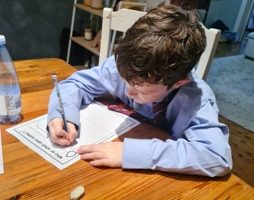 We used the Reciprocal Teaching strategy by using the PowerPoint, book, worksheets, and explicit teaching focussed on “comprehension processes: summarising, questioning, clarifying and predicting” (Fellowes & Oakley, 2019, p. 309).
We used the Reciprocal Teaching strategy by using the PowerPoint, book, worksheets, and explicit teaching focussed on “comprehension processes: summarising, questioning, clarifying and predicting” (Fellowes & Oakley, 2019, p. 309).
Another technique was Guided Writing, where Fletcher was scaffolded and supported to write the report using the correct format. Worksheets were used to start the writing process.
In terms of oral language development, Fletcher was exposed to exploratory activities which included many opportunities for discussion and conversation, and I engaged in explicit teaching for complex vocabulary (Fellowes & Oakley, 2019). He was shown the appropriate language for an expository report on water conservation, such as reservoir, groundwater, minerals, drained, precipitate and so on. This is encouraged by Joan Tough’s seven language functions (1977, as cited in Fellowes & Oakley, 2019), particularly Logical Reasoning . Fletcher was taught to use respectful language through explicit teaching (Fellowes & Oakley, 2019) with the activities around How Aboriginal People managed their water and the PowerPoint presentations.
Multisensory Activities
Daily we receive knowledge through a continuous stream of information – audio, visual, kinesthetics and tactile (Quak et al., 2015). It is, therefore, important to implement these modes into literacy learning. Throughout this process, the teaching strategies incorporated all these modes.
Visual
Watching David Attenborough’s video
Watching a PowerPoint slide show – Water Usage and Report Writing
Audio
Listening to David Attenborough’s video
Listening to All the Water in the World by George Lyon & Katerine Tilloston
Listening to an explicit teaching resource – How did Aboriginal people manage their water resources (Waterwise Queensland, 2022) and Report Writing
Kinesthetics
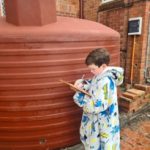 This activity involved Fletcher walking around the school drawing and labelling ways in which the school uses water. This activity was chosen, based on the findings of Munden (2017) which note that kinaesthetic movement activities “do affect student learning” and helped improve boys’ “engagement and decreases the amount of time they are off task” (p. 15). This was incorporated as an educational brain break, to encourage outdoor education.
This activity involved Fletcher walking around the school drawing and labelling ways in which the school uses water. This activity was chosen, based on the findings of Munden (2017) which note that kinaesthetic movement activities “do affect student learning” and helped improve boys’ “engagement and decreases the amount of time they are off task” (p. 15). This was incorporated as an educational brain break, to encourage outdoor education.
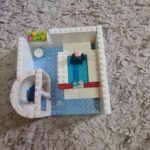
Tactile
We used Lego to create a bathroom and recreated water-wise activities. This dramatic play was to encourage speaking and practice speaking for the final report task.
Electronic Language Experience Approach
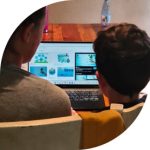 The PowerPoint presentation and picture book are both examples of the Electronic Language Experience (e-LEA) (Fellowes, & Oakley, 2019).
The PowerPoint presentation and picture book are both examples of the Electronic Language Experience (e-LEA) (Fellowes, & Oakley, 2019).
- Multisensory Approach
- Elaboration of the experience – conversation about the media that we watched, listened to as well as the walk around school. The Lego creation is an elaboration of all media.
- Detailed discussion and retelling – recreating what Fletcher learnt using a conversation between student and educator.
- Producing the illustration: the process of creating a PowerPoint for the expository report (heavily scaffolded)
- Eliciting the oral story: creating the presentation on PowerPoint and sequencing the ideas – Why we need water, Who or What uses water, how water is wasted, how we can save water
- Scribing the story: (Scaffolding) I scribed for Fletcher using a word document. Fletcher was interested in typing the title and he practiced using the Word software.
- Rereading the story: Fletcher narrated the report and I embedded it into the PowerPoint Presentation
- Lastly, we watched the presentation, discussing how we could implement changes at home. Comments of improvement were given here.
The I do, We do, You do of Gradual Release of Responsibility model helped the student feel ownership of their learning (Fisher & Frey, 2014).
Creating a Multiliterate Student
Intertwining through both traditional and modern teaching technologies are the semiotic systems – linguistic, visual, audio, gestural and spatial (Buchholz & Pyles, 2018)
- Linguistic: Worksheets, Explicit teaching moments
- Visual: PowerPoint, drawing, video clip
- Audio: Listening to All the Water in the World; conversations
- Gestural: Watching for non verbal clues – eg. frustration
- Spatial: Indoor/Outdoor education, Lego building on the floor
Together these create a multimodal learning environment.
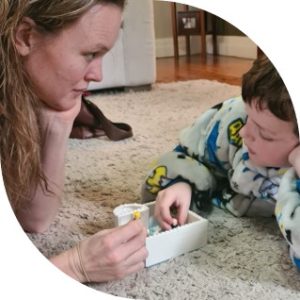
Using writing and drawing Fletcher was able to represent his emerging scientific literacy knowledge using appropriate terminology (Buchholz & Pyles, 2018). Reading and viewing as an embodied experience occurred through the student listening to the information then walking around both his school and home finding ways in which water was being used. Through identifying water sources, Fletcher was able to demonstrate their understanding of the text.
Writing the expository report provided the student with the opportunity to record their knowledge and write an information report.
Scaffolding with Fletcher, we were able to fashion a PowerPoint presentation, incorporating pictures, sounds and text as per the Functional dimension of the Multiliteracies Map from Fellowes and Oakley (2019).
When presenting the expository report, Fletcher was encouraged to use various voice annotations to express different points.
Incorporating ICTs
The following ICTS were used to enhance learning
- Smart TV – Watching Our Planet: How to Save Fresh Water Flow
- Android Tablet – Listening to All the Water in World (independently)
- Laptop – PowerPoint presentation and Word processing
- Internet – Teacher/Student collaboration to retrieve photos for presentation
Hyperlinks were used so that Fletcher had direct access to the websites that were required, for example, a direct link to the YouTube clip “All the Water in the World”.
Collaboration with helping Fletcher choose images created a safe environment, and it provided an opportunity to teach cyber safety and online navigation.
UTILISING a variety of resources
The resources collated for use in this activity included:
- David Attenborough’s Our Planet: How to Save Fresh Water Flow
- All the Water in the World by George Lyon & Katerine Tilloston
- Water Usage information PowerPoint (Twinkl, 2022)
- Planning a non-chronological report using a spidergram (Twinkl, 2022)
- Information sheet about How did Aboriginal peoples manage their water resources (Waterwise Queensland, 2022)
- Lego
- Worksheets (Twinkl, 2022).
- Who or what uses water
- Think of ways to save water
- Water works crossword
- How does water get to us?
- Water around your school
- My informative prewriting template
- Report checklist
- Rubric
Outline of THE Child’s Learning
Achievement standards are written in the Year 2 English curriculum to help ensure a child is reaching their full potential. These are:
Receptive modes (listening, reading and viewing)
By the end of Year 2, students understand how similar texts share characteristics by identifying text structures and language features used to describe characters and events, or to communicate factual information.
They read texts that contain varied sentence structures, some unfamiliar vocabulary, a significant number of high-frequency sight words and images that provide extra information. They monitor meaning and self-correct using knowledge of phonics, syntax, punctuation, semantics and context. They use knowledge of a wide variety of letter-sound relationships to read words of one or more syllables with fluency. They identify literal and implied meaning, main ideas and supporting detail. Students make connections between texts by comparing content. They listen for particular purposes. They listen for and manipulate sound combinations and rhythmic sound patterns.
Productive modes (speaking, writing and creating)
When discussing their ideas and experiences, students use everyday language features and topic-specific vocabulary. They explain their preferences for aspects of texts using other texts as comparisons. They create texts that show how images support the meaning of the text.
Students create texts, drawing on their own experiences, their imagination and information they have learnt. They use a variety of strategies to engage in group and class discussions and make presentations. They accurately spell words with regular spelling patterns and spell words with less common long vowel patterns. They use punctuation accurately, and write words and sentences legibly using unjointed upper- and lower-case letters.
Using a multimodal text to create an expository text enabled Fletcher to have a whole approach to learning where he used all his senses to create a literacy text. Incorporating a link between English and the Science curriculum enabled for a richer learning outcome, and working with a variety of mediums such as PowerPoint, picture books, worksheets, Lego, documentaries and explicitly teaching all semiotic systems helped ensure an in-depth learning experience.
This report task ensured Fletcher developed his ability to create texts on information he had learnt (ACARA, 2022). Throughout this task, points were made to ensure he could use “punctuation accurately, and write words and sentences legibly using unjoined upper- and lower-case letters” (ACARA, 2022).
The overall learning outcome for this task was to educate Fletcher on water conservation so that he could use the information he researched and write a Report to help educate his peers. Through engagement and enjoyment on an interesting topic, Fletcher subconsciously and knowingly used the English curriculum to present his report.
Using a rubric, it was evident that Fletcher needed to work towards improving his speaking pace. Furthermore, to extend his learning, Fletcher could research other water saving techniques and implement a more in-depth scientific vocabulary.
Creating a multimedia text was a fun and interesting activity when my son. I think he could have benefitted from a plan, for example, 4-5 slides where he wrote and drew what he wanted. This could have saved time.
In reflection on my teaching, I over-planned, preparing too many work sheets and too many activities. Simplifying the task and focusing on a few main points would have had the same effect with less pressure.
The co-constructed multimodal text
References
Attenborough, D. (2020, 29 March). Our planet: How to save fresh water flow [Video]. YouTube. https://www.youtube.com/watch?v=MwNI_0iRwNg&t=19s
Australian Curriculum, Assessment and Reporting Authority. (2022). Foundation to year 10 curriculum: Language for interaction. https://www.australiancurriculum.edu.au/f-10-curriculum/english/?year=11574&strand=Language&strand=Literature&strand=Literacy&capability=ignore&capability=Literacy&capability=Numeracy&capability=Information+and+Communication+Technology+%28ICT%29+Capability&capability=Critical+and+Creative+Thinking&capability=Personal+and+Social+Capability&capability=Ethical+Understanding&capability=Intercultural+Understanding&priority=ignore&priority=Aboriginal+and+Torres+Strait+Islander+Histories+and+Cultures&priority=Asia+and+Australia%E2%80%99s+Engagement+with+Asia&priority=Sustainability&elaborations=true&elaborations=false&scotterms=false&isFirstPageLoad=false#cdcode=ACELA1428&level=F
Buchholz, B., & Pyles, D. (2018). Scientific literacy in the wild: Using multimodal texts in and out of school. The Reading Teacher, 72(1), 61-70. https://doi.org/10.1002/trtr.1678
Dyment J., Hill, A., & Emery, S. (2014). Sustainability as a cross-curricular priority in the Australian curriculum: A Tasmanian investigation. Environmental Education Research, 21(8), 1105-1126. https://doi.org/10.1080/13504622.2014.966657
Fellowes, J., & Oakley, G. (2019). Language, literacy and early childhood education (3rd ed.). Oxford University Press.
Fisher, D., & Frey, N. (2014). Better learning through structured teaching: A framework for the gradual release of responsibility (2nd ed.) Association for Supervision and Curriculum Development.
Munden, M. (2017). Kinesthetic movement activities and boys’ engagement and behavior in literacy [Master’s thesis, Northwestern College, Orange City, IA]. NWC Commons. https://nwcommons.nwciowa.edu/education_masters/22/
Quak, M., London, R., & Talsma, D. (2015). A multisensory perspective of working memory. Frontiers in Human Neuroscience, 9. https://doi.org/10.3389/fnhum.2015.00197
Twinkl. (2022). https://www.twinkl.com.au/. https://www.twinkl.com.au/
Waterwise Queensland. (n.d.) How did Aboriginal peoples manage their water resources. Queensland Government. https://www.rdmw.qld.gov.au/__data/assets/pdf_file/0007/1408282/aboriginal-peoples-manage-water-resources.pdf

